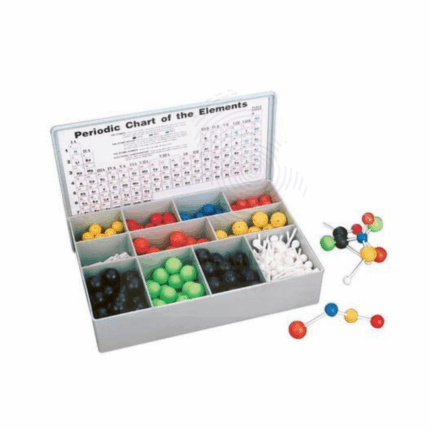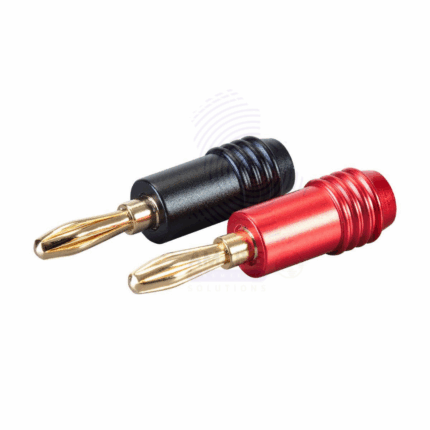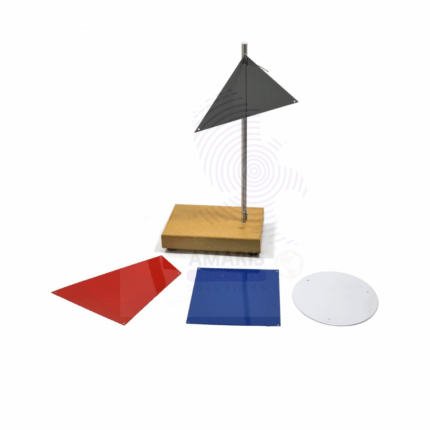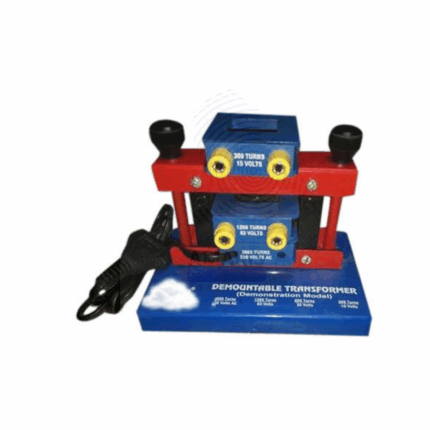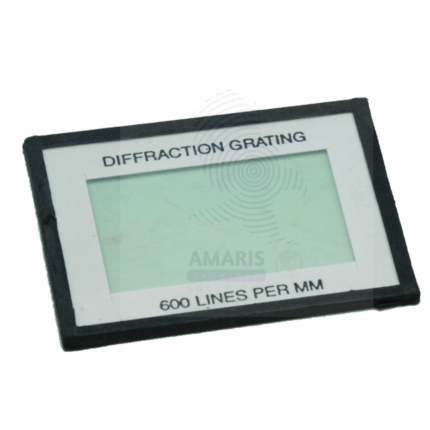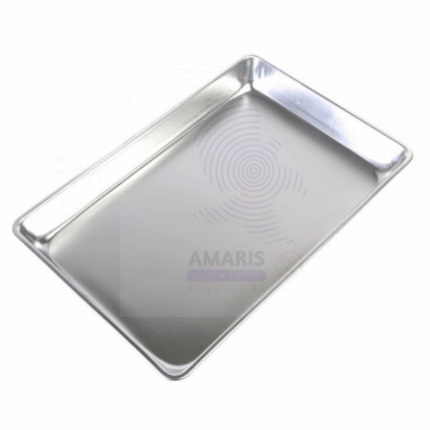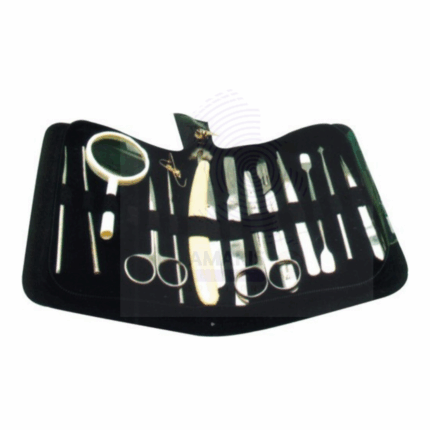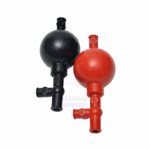
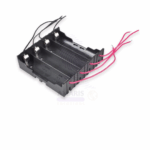
PITH BALLS ON STAND
$ 9.37 Original price was: $ 9.37.$ 9.29Current price is: $ 9.29.
Product Description
Pith Balls on Stand are lightweight, spherical objects typically made from dried plant pith (spongy plant tissue), suspended from insulating threads and mounted on a non-conductive support structure. These classical electrostatics demonstration tools are used in physics laboratories to visually illustrate principles of static electricity, charge induction, electric forces, and Coulomb’s Law. The balls are extremely lightweight and react readily to electrostatic forces when charged objects are brought nearby, making them ideal for teaching foundational electricity concepts. The stand is usually composed of a plastic or acrylic base and vertical support to ensure stability and electrical insulation during experiments.
PITH BALLS ON STAND
Primary Uses
- Educational and Physics Demonstration Applications
- Demonstrating static electric forces using charged rods or Van de Graaff generators.
- Illustrating like-charge repulsion and opposite-charge attraction.
- Teaching electrostatic induction and charge separation.
- Exploring basic electrostatic principles such as Coulomb’s Law.
- Visualizing how insulating and conductive materials affect electrostatic interaction.
- Demonstrating charge transfer through contact or induction.
Secondary Uses
- Experimental and Interactive Learning Tools
- Used in student projects and interactive physics models.
- Enhancing understanding of field lines and invisible forces in electrostatics.
Demonstrating real-time response to charging, discharging, and grounding phenomena.
1.Basic Identification Attributes
- Material (Balls): Natural pith or synthetic equivalent for high sensitivity.
- Threads: Lightweight, insulating threads (e.g., silk or nylon).
- Stand Material: Non-conductive plastic, acrylic, or wood.
- Configuration: Two or more balls suspended closely, enabling charge interaction visualization.
2.Physical & Chemical Properties
- Weight: Extremely low mass for enhanced sensitivity to static forces.
- Conductivity: Non-conductive balls and threads prevent unintentional charge loss.
- Mobility: Freely swinging and responsive to electrostatic influences.
- Color: Usually white or beige for visibility against lab backdrops.
3.Safety & Hazard Attributes
- No chemical or electrical hazard.
- Safe for all age levels under teacher supervision.
4.Storage & Handling Attributes
- Store in dry environments to prevent moisture absorption by pith.
- Keep away from dust, humidity, and direct sunlight.
- Avoid tangling of threads and deformation of the balls during storage.
5.Regulatory & Compliance Attributes
- No specific regulatory constraints.
- Safe for use in classrooms and demonstration labs.
6.Environmental & Health Impact
- Biodegradable when made from natural pith.
- Non-toxic and safe for handling and disposal.
Safety Handling Precautions
- Handle gently to avoid crushing or deforming the pith balls.
- Do not expose to liquids or solvents.
First Aid Measures
- Not applicable under normal use.
Firefighting Measures
- Flammable under high heat—keep away from open flames.
- Use water, CO₂, or dry chemical extinguishers if involved in fire.


 Preservatives(food)
Preservatives(food) Flavor Enhancers
Flavor Enhancers Acidulants
Acidulants Sweeteners
Sweeteners Antioxidants
Antioxidants Colorants(food)
Colorants(food) Nutraceutical Ingredients (food)
Nutraceutical Ingredients (food) Nutrient Supplements
Nutrient Supplements Emulsifiers
Emulsifiers
 Collectors
Collectors Dust Suppressants
Dust Suppressants Explosives and Blasting Agents
Explosives and Blasting Agents Flocculants and Coagulants
Flocculants and Coagulants Frothers
Frothers Leaching Agents
Leaching Agents pH Modifiers
pH Modifiers Precious Metal Extraction Agents
Precious Metal Extraction Agents
 Antioxidants(plastic)
Antioxidants(plastic) Colorants (Pigments, Dyes)
Colorants (Pigments, Dyes) Fillers and Reinforcements
Fillers and Reinforcements Flame Retardants
Flame Retardants Monomers
Monomers Plasticizers
Plasticizers Polymerization Initiators
Polymerization Initiators Stabilizers (UV, Heat)
Stabilizers (UV, Heat)
 Antifoaming Agents
Antifoaming Agents Chelating Agents
Chelating Agents Coagulants and Flocculants
Coagulants and Flocculants Corrosion Inhibitors
Corrosion Inhibitors Disinfectants and Biocides
Disinfectants and Biocides Oxidizing Agents
Oxidizing Agents pH Adjusters
pH Adjusters Scale Inhibitors( water)
Scale Inhibitors( water)
 Antioxidants(cosmetic)
Antioxidants(cosmetic) Emollients
Emollients Fragrances and Essential Oils
Fragrances and Essential Oils Humectants
Humectants Preservatives
Preservatives Surfactants(cosmetic)
Surfactants(cosmetic) Thickeners
Thickeners UV Filters
UV Filters
 Fertilizers
Fertilizers Soil Conditioners
Soil Conditioners Plant Growth Regulators
Plant Growth Regulators Animal Feed Additives
Animal Feed Additives Biostimulants
Biostimulants Pesticides (Herbicides, Insecticides, Fungicides)
Pesticides (Herbicides, Insecticides, Fungicides)
 Active Pharmaceutical Ingredients (APIs)
Active Pharmaceutical Ingredients (APIs) Excipients
Excipients Solvents(pharmaceutical)
Solvents(pharmaceutical) Antibiotics
Antibiotics Antiseptics and Disinfectants
Antiseptics and Disinfectants Vaccine Adjuvants
Vaccine Adjuvants Nutraceutical Ingredients (pharmaceutical)
Nutraceutical Ingredients (pharmaceutical) Analgesics & Antipyretics
Analgesics & Antipyretics
 Analytical Reagents
Analytical Reagents Solvents(lab)
Solvents(lab) Chromatography Chemicals
Chromatography Chemicals Spectroscopy Reagents
Spectroscopy Reagents microbiology-and-cell-culture-reagents
microbiology-and-cell-culture-reagents Molecular Biology Reagents
Molecular Biology Reagents Biochemical Reagents
Biochemical Reagents Inorganic and Organic Standards
Inorganic and Organic Standards Laboratory Safety Chemicals
Laboratory Safety Chemicals Specialty Laboratory Chemicals(Special Laboratory Equipment)
Specialty Laboratory Chemicals(Special Laboratory Equipment)
 Demulsifiers
Demulsifiers Hydraulic Fracturing Fluids
Hydraulic Fracturing Fluids Scale Inhibitors(oil)
Scale Inhibitors(oil) Surfactants(oil)
Surfactants(oil) Drilling Fluids
Drilling Fluids
 Dyes and Pigments
Dyes and Pigments Bleaching Agents
Bleaching Agents Softening Agents
Softening Agents Finishing Agents
Finishing Agents Antistatic Agents
Antistatic Agents
 Admixtures
Admixtures Waterproofing Agents
Waterproofing Agents Sealants and Adhesives
Sealants and Adhesives Curing Compounds
Curing Compounds Concrete Repair Chemicals
Concrete Repair Chemicals Anti-Corrosion Coatings
Anti-Corrosion Coatings
 Surfactants(cleaning)
Surfactants(cleaning) Builders
Builders Enzymes
Enzymes Solvents (Cleaning)
Solvents (Cleaning) Fragrances
Fragrances
 Electronic Chemicals
Electronic Chemicals Catalysts
Catalysts Lubricants
Lubricants Photographic Chemicals
Photographic Chemicals Refrigerants
Refrigerants Automotive chemicals
Automotive chemicals Pyrotechnic Chemicals
Pyrotechnic Chemicals
 Biodegradable Surfactants
Biodegradable Surfactants Bio-based Solvents
Bio-based Solvents Renewable Polymers
Renewable Polymers Carbon Capture Chemicals
Carbon Capture Chemicals Wastewater Treatment Chemicals
Wastewater Treatment Chemicals
 Pigments
Pigments Solvents(paint)
Solvents(paint) Specialty Coatings
Specialty Coatings Binders/Resins
Binders/Resins Additives
Additives Driers
Driers Anti-Corrosion Agents
Anti-Corrosion Agents Functional Coatings
Functional Coatings Application-Specific Coatings
Application-Specific Coatings
 Fresh Herbs
Fresh Herbs Ground Spices
Ground Spices Whole Spices
Whole Spices Spice Blends
Spice Blends Dried Herbs
Dried Herbs
 Leavening Agents
Leavening Agents Dough Conditioners
Dough Conditioners Flour Treatments
Flour Treatments Fat Replacers
Fat Replacers Decoratives
Decoratives Preservatives(baking)
Preservatives(baking)
 Plasticizers & Softeners
Plasticizers & Softeners Reinforcing Agents
Reinforcing Agents Adhesion Promoters
Adhesion Promoters Vulcanizing Agents
Vulcanizing Agents Antidegradants
Antidegradants Blowing Agents
Blowing Agents Fillers & Extenders
Fillers & Extenders Accelerators & Retarders
Accelerators & Retarders

